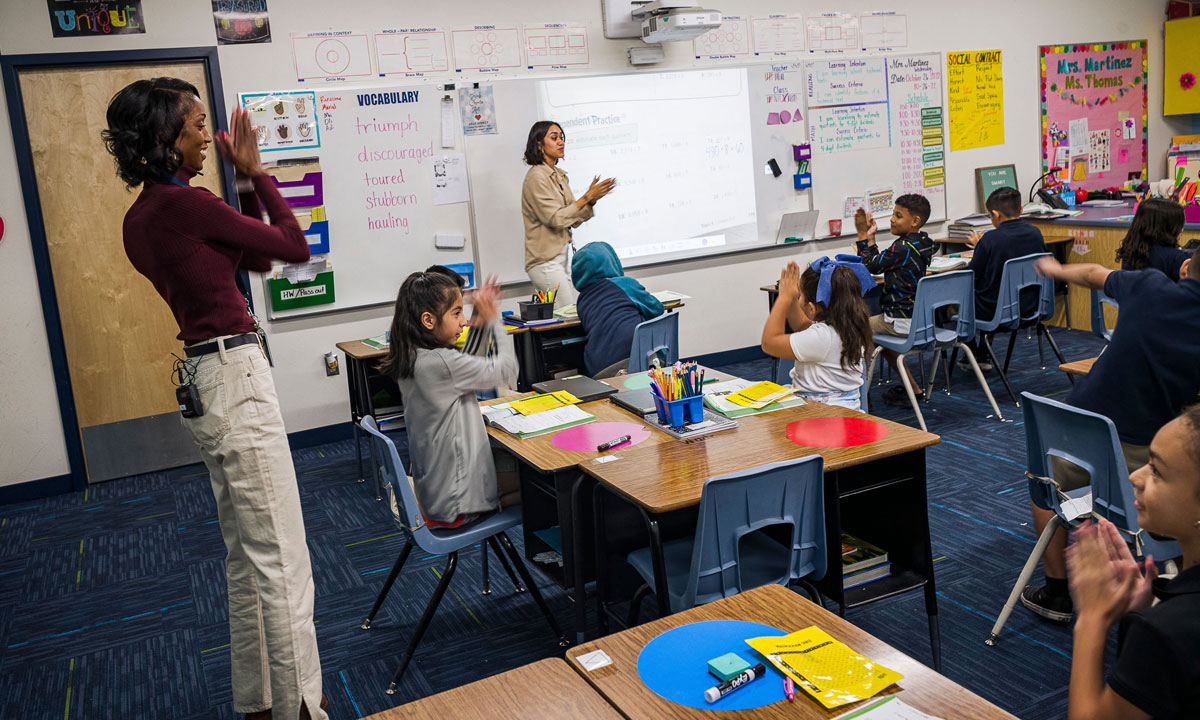Surprise! Rising Enrollment Numbers Show Young People Want to Be Teachers
Aldeman: Despite doomsday narratives, the data suggest that things are getting better, not worse. The teacher pipeline is growing

Get stories like this delivered straight to your inbox. Sign up for The 74 Newsletter
Correction appended April 14
Flat starting salaries. Attempts to ban books. A lack of respect. An all-time low in the percentage of Americans who want their child to become a public school teacher.
The teaching profession must be in a state of crisis, right?
If so, someone should tell young people. According to data that came out late last year, the number of people enrolled in teacher preparation programs rose by 6% from 2019 to 2021. Teacher preparation program completions increased a similar amount.
In raw numbers, public schools employ more teachers than ever. And, because K-12 student enrollment is down, public schools are hitting all-time lows in student-to-teacher ratios.
But before anyone breaks out the champagne, a bit of caution is in order. Schools would like to hire even more teachers than they already employ, and they’re struggling to fill those newly created vacancies.
On the supply side, it’s important to balance both the short- and long-term trends. It is still true that teacher preparation enrollments and completions are down substantially from where they were 10 to 15 years ago. It’s also possible that the rebound that’s starting to emerge in the data is a false start. Maybe the numbers will start to fall again; we’ll know better as we get more years of data.
But three things offer hope that things are improving.
One, it’s a broad-based recovery in terms of program types. Traditional teacher preparation programs are still the largest training ground for new educators, and they’re now serving 3% more candidates than they were at the depths of their lows. Enrollments at alternative teacher preparation programs not affiliated with a college and university are up 22%, and enrollments at alternative programs at institutions of higher ed are up another 20% over the last three years.
Two, the recovery is widespread geographically. Most states are seeing big increases in the number of teacher trainees.
Over the last three years for which we have data, teacher preparation enrollments rose in 37 states and the District of Columbia. Kentucky, Delaware and Mississippi have seen the biggest growth, with increases in the number of new teacher candidates in their pipelines of 50% or more. In raw numbers, California has nearly 5,000 more than it did just a few years ago.
(Note: Texas has seen enormous increases in its teacher preparation program enrollments. Those have been largely driven by its private, for-profit sector, and due to those anomalies, I’ve removed Texas from all the national data above. But Texas has seen double-digit gains over the last few years in its traditional programs, too.)
Now, enrollments are not the same thing as completions. Some people may drop out or decide they don’t want to become teachers. And, even if the supply of new teacher candidates is starting to improve, it still isn’t growing fast enough to match the rising demand. That’s particularly true in some rural communities and in chronic shortage areas like special education and STEM.
In response, state leaders should be looking at their internal data to see how supply matches up with demand, and whether candidates are pursuing training for the most needed subject areas. Districts should continue to be creative about finding ways to expand their applicant pool and ensure they’re able to fill their unique labor needs.
Still, enrollments are a leading indicator. And that’s the third reason for optimism. With completions already on the rise, the increase in enrollments could foreshadow more growth in the number of newly licensed teachers who are about to hit the market.
Regardless, media coverage and the general perception of the teaching profession are out of step with the actual data. It may be hard for people to accept these trends in light of the powerful doomsday narratives.
But the data suggest that things are getting better, not worse. More young people want to become teachers, and the pipeline is growing, not shrinking.
Correction: Some statistics were amended to reflect a change in the federal data definition of enrollment in 2018-19.
Get stories like these delivered straight to your inbox. Sign up for The 74 Newsletter

;)
